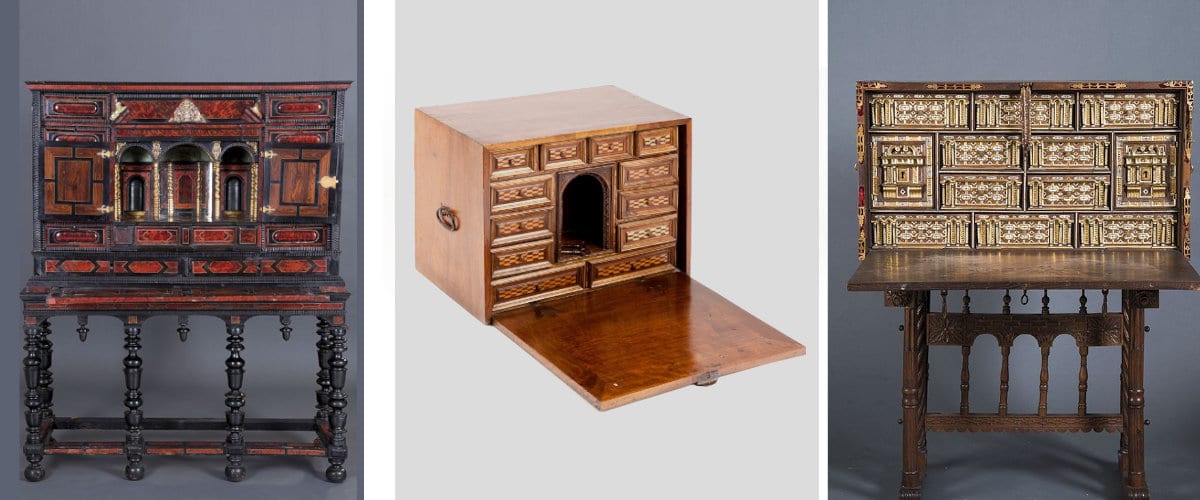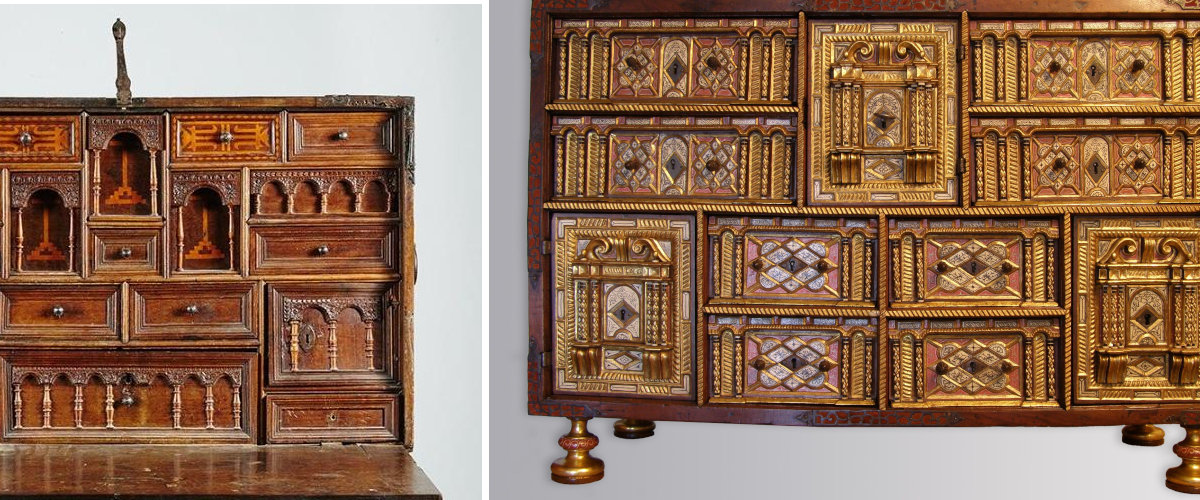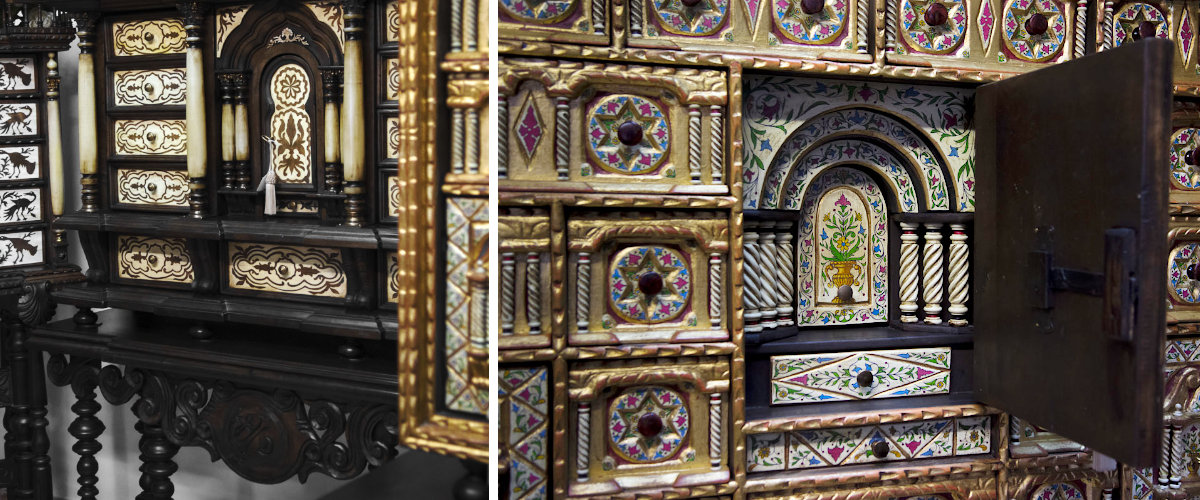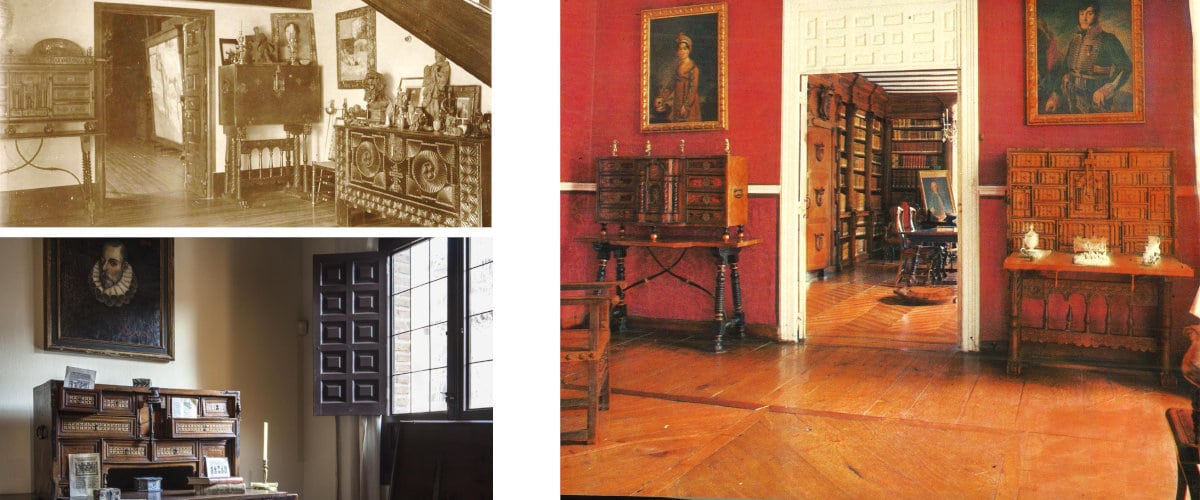
cabinet, ña
3m Wooden furniture with many small drawers and drawers, decorated with carving or inlaid work, partly gilded and partly in bright colors, in the style of those built in Bargas.
Cabinets were very popular furniture until the middle of the last century. Furniture with a great craft work in which great treasures such as documents, payment letters and coins were kept. Made of wood or walnut and using traditional techniques from each era, they are today a jewel of a museum. Do you want to know the history of this piece of furniture?
A Little History
It was in the XNUMXth century when the first bargueño artisans appeared in Toledo. The guild was dominated by the Moors that they would later be expelled outside the city walls. They spent the time of their deportation in what was then known as the Bargas farmhouse, a few kilometers from the capital. And according to how much history it was then that these arches were called cabinets.

However, for a written record of the bargueño denomination to remain, we would have to wait for the XIX century. It was in 1972, specifically, where the word appears written for the first time in the catalog of Spanish artistic objects of the Victoria and Albert Museum (London) made by Juan Facundo Riaño. And it was not until 1914 when the word was incorporated into the dictionary of the Royal Academy of the Language.
The bargueños were originally camping furniture. Full of documents, payment letters, jewelry or money, they were transported on mules as if they were suitcases. Those who accompanied Catherine of Aragon, the youngest of the Catholic Monarchs, who at the age of fifteen set out in search of Arturo, Prince of Wales, are now exhibited in a glass case of the National Museum of Art and Design, the Victoria and Alberto de London. Once at the destination, they were placed on the floor in the ladies' rooms who sat on cushions near them.
Years later, however, the cabinet would stop traveling to become part of the furniture in the palaces that the new Spanish empire had spread across Europe and America. For it, they raised him by putting legs on him. And it was in that way and at that time, which we know as the Golden Age, when these pieces lived their best time.
General characteristics
The cabinets generally have a birch or walnut body. Woods pliable enough to give these pieces of furniture those intricate shapes that are so characteristic and easy to stain. Woods, yes, worked with traditional techniques of each era.
For having served as a field piece of furniture, its measurements did not usually exceed a meter in front and a half in depth. Remember that they had to be light enough to be loaded on mules. And they contained between ten and twelve drawers, and some more hidden, to keep from money to the most lyrical sonnets of love.

The cabinets, like other furniture, were adapted to the tastes of each country and time in history. The XNUMXth-century Castilian cabinet is decorated with Plateresque or Mannerist type. Decoration in which carving with plant motifs and / or fantastic creatures predominates. Many others preserve the decoration of bone inlaid on walnut with a Mudejar influence with very small pieces that represent religious or court scenes. And there are, especially in the seventeenth century that combined both styles.
Nor was romanticism left out of the styles to which the cabinets were adapting. "Many pieces went to Valencia, the most colorful and romantically inspired, with scenes that tell of love affairs between Huerta families," says Julio Martí, the last bargueño artisan.
Decorate with cabinets
The cabinet was a common piece of furniture in the Spanish houses of the time. In some, up to three or four cabinets could be found, as can be read in the inventories. Always in private stays given the nature of the documents and belongings that were kept in these.

What is the best place in the house to place a cabinet? If we think about the purpose for which this piece of furniture was conceived, it seems logical to think that the bedroom, the library or the study are the most suitable rooms to place it. In fact, male offices and female bedrooms at the time were its main destinations.
However, today it is common for whoever has a cabinet to provide it with a privileged place in the house. Why? Because these pieces of furniture are today a piece of history. They are capable, by themselves, of giving life to an entire wall. They will look great in the hall, in the living room or down the hall.
Did you know the history of the cabinet? Would you like to have a handmade piece like this one at home? Where would you place this historical piece of furniture?